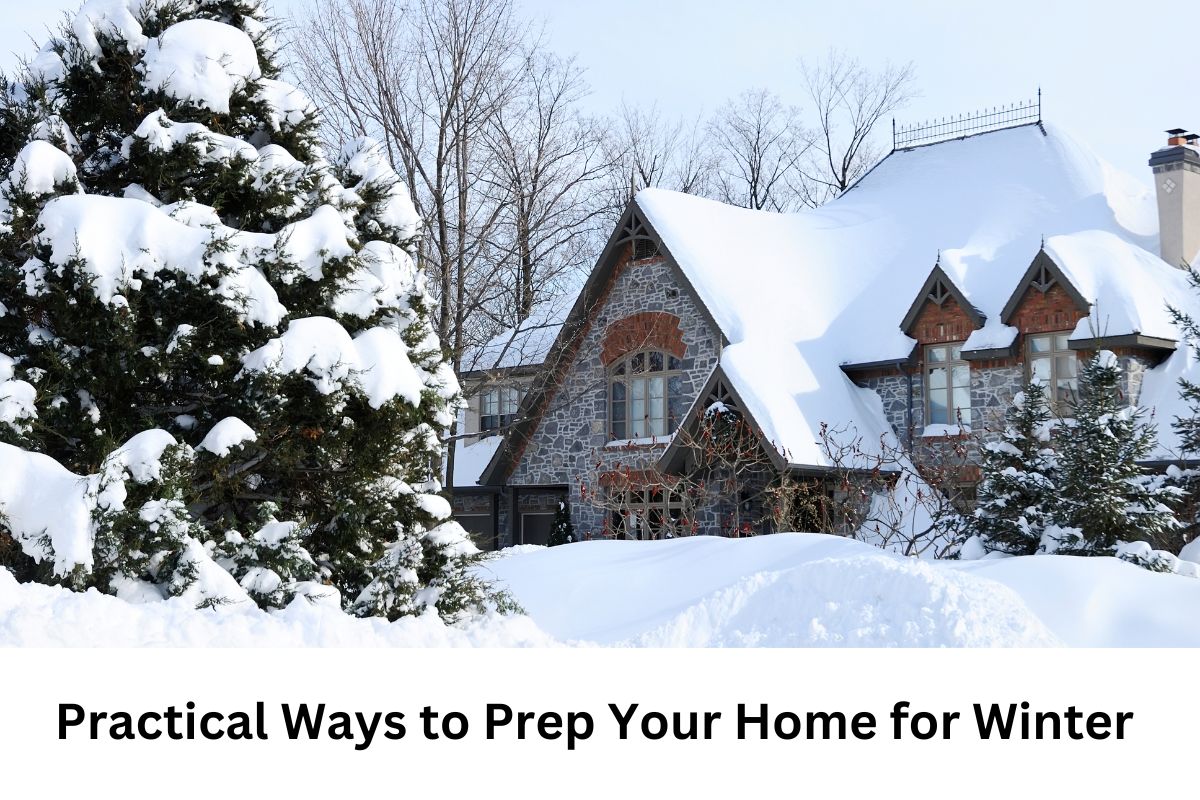If you haven’t taken steps to winterize your home, it’s not too late. Even though it is best to prepare your home for cold weather in early fall, you still have time to get your home ready for winter. Before you know it, the temperatures can drop and catch you unprepared, so don’t wait any longer.
To help you avoid wintertime emergencies and inconvenience, we have some practical tips for winterizing your home.
Gather your tools, make a checklist, and get started today. Here’s what you need to do.
How to Winterize Your Home Inside
It’s hard to know where to begin when it comes to trying to winterize your home. It seems as if there is an endless list of things to do. The following suggestions will help you devise a plan that works for your schedule. To winterize your home on the inside, check the following:
Check the Attic and Basement Insulation
Proper insulation in the attic ensures that your home can retain the warm air generated by your heat source. Insulation is rated with “R-values” that indicate how energy-efficient the insulation is. Typically, the most recommended R-value ranges from R-30, R-38, and R-49 for attics.
Your basement ceiling also needs to be insulated, even if it’s an unfinished basement. Proper insulation on the basement ceiling will keep the first floor of your home warmer and reduce energy costs.
Reduce the Temp on Your Water Heater
Most water heaters are set at 140 degrees Fahrenheit, but many households can get by with a lower setting of 120 degrees. By lowering the temperature on your water heater, it will reduce wear and tear on the pipes. It can also save you up to $30 per year for every 10 degrees the temp is lowered, according to the Department of Energy (DOE).
Have Your Chimney Inspected
The Chimney Safety Institute of America recommends you get your chimney inspected and cleaned annually. This preventative measure will decrease the risk of fire and reduce carbon monoxide intrusion in your home.
Check for Cold Drafts
Blocking cold drafts not only keeps your family warmer, but it can also save money. The DOE estimates about a 30 percent savings on energy costs if you block drafts. You can use weatherstripping, window film, and caulk to keep drafts out.
How to Winterize Your Home Outside
Where do you begin to winterize your home on the outside? The answer depends on where you live and the age of your home. Older homes or historic homes may require more extensive preparation than newer, energy-efficient homes. Nevertheless, every home needs some level of winterizing. Here are some ways to prepare the outside of your home for winter weather.
Insulate Your Pipes
Winter weather brings the potential for burst pipes in your home. A burst pipe can cause extensive damage that can be costly to repair. You can hire a professional to insulate the pipes or do it yourself. You should also know where the main water shutoff is in case of a burst pipe. Don’t forget to drain and shut off outdoor water sources such as hoses and irrigation systems.
Tune-Up Your Furnace or HVAC
You don’t want your heating source to fail on the coldest day of the year, but a little preventive maintenance helps avoid this. Make sure your filters are changed regularly and schedule a service appointment to ensure everything operates as it should. If you have window AC units, remove them to prevent drafts.
Protect Your Patio or Deck
If you live in a region where snow is frequent, you may need to protect your deck or patio and any outdoor furniture. You can prepare your deck by applying a fresh coat of sealant and protect the furniture with weatherproof covers. Don’t forget to check your snow blower to make sure it’s operating properly. Also, check to see that you have enough de-icing agents on hand.
Clean the Gutters
Keeping your gutters clear will prevent water and snow from damaging your roof. Gutters direct water away from the roof, but they can’t do their job if clogged with leaves and other debris. Clogged gutters can also increase the risk of ice dams forming on the edge of the roof to cause significant damage.
Check the Roof
Your roof protects everything inside your home, so you want it to be in good condition year-round. Check for buckled or curled shingles and check the ceiling indoors for signs of leaks. Repairing these small issues now could prevent major damage when snow or ice collects on the roof.
Trim Your Trees
Trimming the trees is crucial for several reasons besides aesthetics. If your trees have dead or weak limbs or branches, they can fall due to snow or wind. A fallen branch can not only threaten your home, but could also cause injury to a person or damage your vehicle.
Winterize Your Home With Adequate Homeowners Insurance
As part of winterizing your home, you should review your homeowners insurance policy to be sure you are adequately covered for winter perils. If you aren’t sure if your homeowners insurance covers snow, ice, wind, or flood damage, contact Sandifer Insurance Agency today. One of our agents will review your policy to make sure you have the right coverage.
Sandifer Insurance Agency is a family-owned insurance agency located in historic Cheraw, SC. We have over 40 years of experience in helping homeowners protect their homes and families with reliable, affordable insurance.
Contact Sandifer by phone, email, or online today to make sure your home is protected against winter perils.
Sources:
energy.gov/ – Do-It-Yourself Savings Project: Lower Water Heating Temperature

